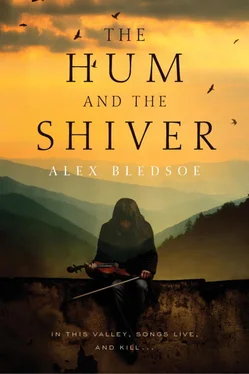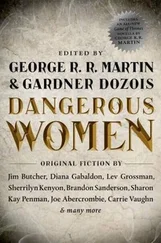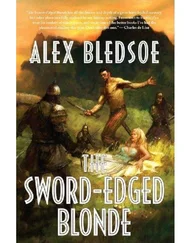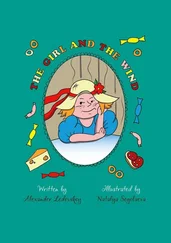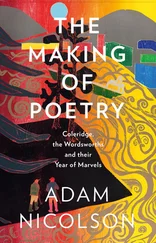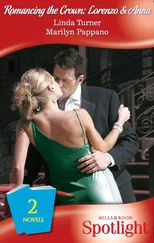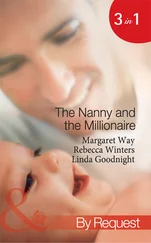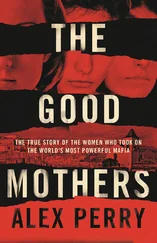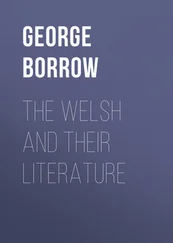“That’s a big difference.”
“True,” she agreed, then stepped closer and looked up at him.
He leaned down and kissed her, tenderly. She responded in kind. When they broke the kiss, he said, “I can’t cross some lines, you know.”
“I know,” she said in a voice barely louder than a whisper. “And honestly, I may try to get you as close to them as possible. I’m like that. But I’ll do my best to respect them.”
“So are you asking me to be your boyfriend?” he said with a grin.
She laughed. “I’m asking you to dinner in Johnson City Monday night. You drive, I’ll pay. But only after…”
“What?”
“Did you go and look at that painting in Cricket?”
“No, not yet.”
“Do that. Then decide.”
“Look at the painting, then decide if I want to go out with you?”
“Yes.”
“What’s so important about the painting?”
She smiled knowingly, teasingly. “If I told you that, it’d be cheating. And that’d be a terrible start to our relationship.”
He stepped closer and kissed her again. This time she leaned up, her lips parted, and it became the kind of kiss that was as much promise as gratification. When they separated, she said, “That was the hum. If you’re good, later I’ll show you the shiver.”
They rejoined the mourners. Craig thought about offering to speak, but figured that would be both rude and unwelcome. He realized he was the only male in the room just before the other men arrived, dirty and tired from grave-digging. With no comment they closed the casket and carried it outside. The women followed, their voices mixing in a song Craig had never before heard.
Bronwyn walked directly behind the casket, playing her mandolin. Chloe clutched her autoharp, and Deacon played long, mournful notes on his fiddle. A few others had instruments, but most simply sang. Craig knew none of the songs, and they seemed to vanish from his memory as soon as he heard them.
After the service, Brownyn and the other women went off together into the woods. Craig started to go with the men, but Aiden suddenly took his hand, the same grim look on his face.
“I’m supposed to walk you back to your car.”
“You are.”
He nodded. “Bronwyn said to tell you this part was private. She said you’d understand.”
“Okay,” he said. He looked back toward the woods, but everyone had vanished into its shadows.
As he drove away, he kept thinking he saw movement along the tops of the trees, as if things flew up from the forest and into the evening’s purple sky. He finally put it down to a trick of the light.
Craig visited the town of Cricket on the Monday following Kell Hyatt’s funeral. When he looked up the directions online, he found a link to the town’s official Web site, and read its history with wonder.
The world watched in 1875 as famous British author, statesman, and social reformer Roy Howard dedicated the new town of Cricket. It was to be a cooperative, class-free society, a Utopia where artisans, tradesmen, and farming families could build a new community through agriculture, temperance, and high moral principles. Today, in a gentle mountain setting little changed by twenty-first-century technology, this would-be Shangri-la survives. More than two dozen of its decorative, gabled buildings remain, and Cricket’s dual Victorian and Appalachian heritage is everywhere visible.
The Roy Howard Library in Cricket had one door and a spire like a church, only with no cross atop it. The roof was plated with metal sheets stained to look like the original copper. It stood in a little grove of trees next to the visitors’ center, with no connection to the sidewalk.
Inside, the library consisted of one big room, with ten-foot-high shelves along every available bit of the walls. Two standing shelf units took up the middle of the floor, along with a table covered with elaborate first editions.
The librarian, a tall freckled woman with short hair and glasses, stood as he entered. “Welcome to the Howard Library. I have to tell you not to touch anything without putting on these.” She tapped a box of disposable cotton gloves.
“Why?” Craig asked.
“Almost every book in here is a rare first edition over a hundred years old. The oil from your fingers can damage the paper. Were you looking for anything in particular?”
“I’m supposed to ask to see the painting.”
She gestured at the walls above the shelves, where several old-fashioned paintings hung in the dimness. “Which painting?”
“I’m not sure. I was told just to ask to see the painting.”
“By whom?”
“Bronwyn Hyatt, actually.”
The librarian’s expression turned skeptical. “The war hero? Well, she is a Cloud County Tufa, I’ve heard.”
“She is,” Craig assured her.
“Then I know the one she means.”
“Wait for me,” said another voice.
Craig turned. Don Swayback had entered silently, and now offered his hand. “Hey there, Reverend. Good to see you again.”
“Don,” Craig said as they shook. “Missed you in church yesterday.”
“Stayed out in the wind too long,” he said, and grinned as if it were a private joke.
“What brings you here?”
“From what I just overheard, the same thing as you. Somebody told me to come check out the painting.”
The librarian led them to the back of one of the freestanding shelf units. There, hanging on the end piece, was a painting two feet high by a foot wide, displayed in an elaborate wooden frame that made it appear much larger. It depicted a score of diminutive European storybook fairies gathered around a dominant central figure. This main subject faced away from the viewer and held what looked like an ax above his head. He seemed about to bring it down on a hickory nut at his feet. Stems of grass and flower blossoms laced through the image gave it both scale and depth. The style was a kind of hyperrealism, in which the characters’ proportions seemed slightly distorted beneath the wealth of surface detail.
“The Fairy Feller’s Master Stroke,” the librarian said. “It’s one of our most prized pieces. And it’s not the watercolor copy, either. That’s in the Tate Gallery in London. This,” she said with pride, “is the original.”
Don noted its location. “You don’t exactly show it off.”
“We’ve left it exactly where the charter residents of Cricket placed it,” the librarian said. “Would you like to see something especially impressive about it?”
She took out her keychain and switched on a tiny flashlight. “Watch this.” She slowly moved the circle of light across the surface.
It was astounding. The painting was almost done in three dimensions, with layer upon layer of paint creating a depth hidden by flat illumination. The librarian continued, “The artist worked on this one canvas for eight years, from 1855 to 1864, while confined in an asylum after he killed his father.”
Craig barely heard her words. To the left of center the figure of a woman, looking away as if distracted by her friend behind her, bore an uncanny resemblance to Bronwyn despite the artist’s stylization. The similarity was so strong, he couldn’t believe it was mere coincidence, yet how could it be otherwise?
“They all look like Tufas,” Don said softly.
Craig slowly nodded. “Wow. Who told you to come see this?”
“A little Tufa girl I met. You?” But before Craig could answer, Don looked at his watch and exclaimed, “Oh, hell, I’ve got to go, I’m going to be late. Good to see you again, Reverend.”
“Where are you off to?” Craig asked.
“I’ve got my exclusive interview this afternoon with Bronwyn Hyatt. What about you?”
Читать дальше
